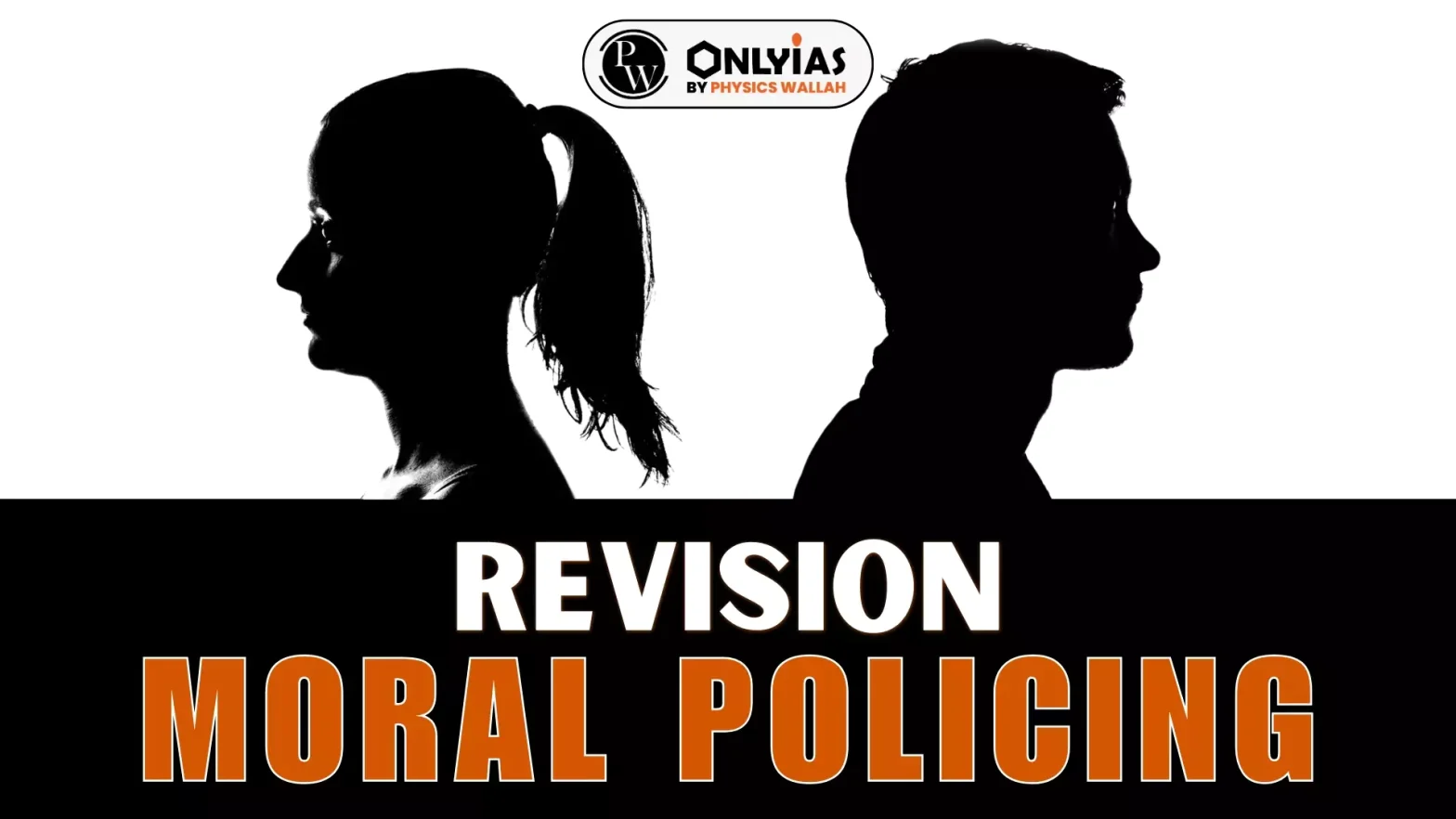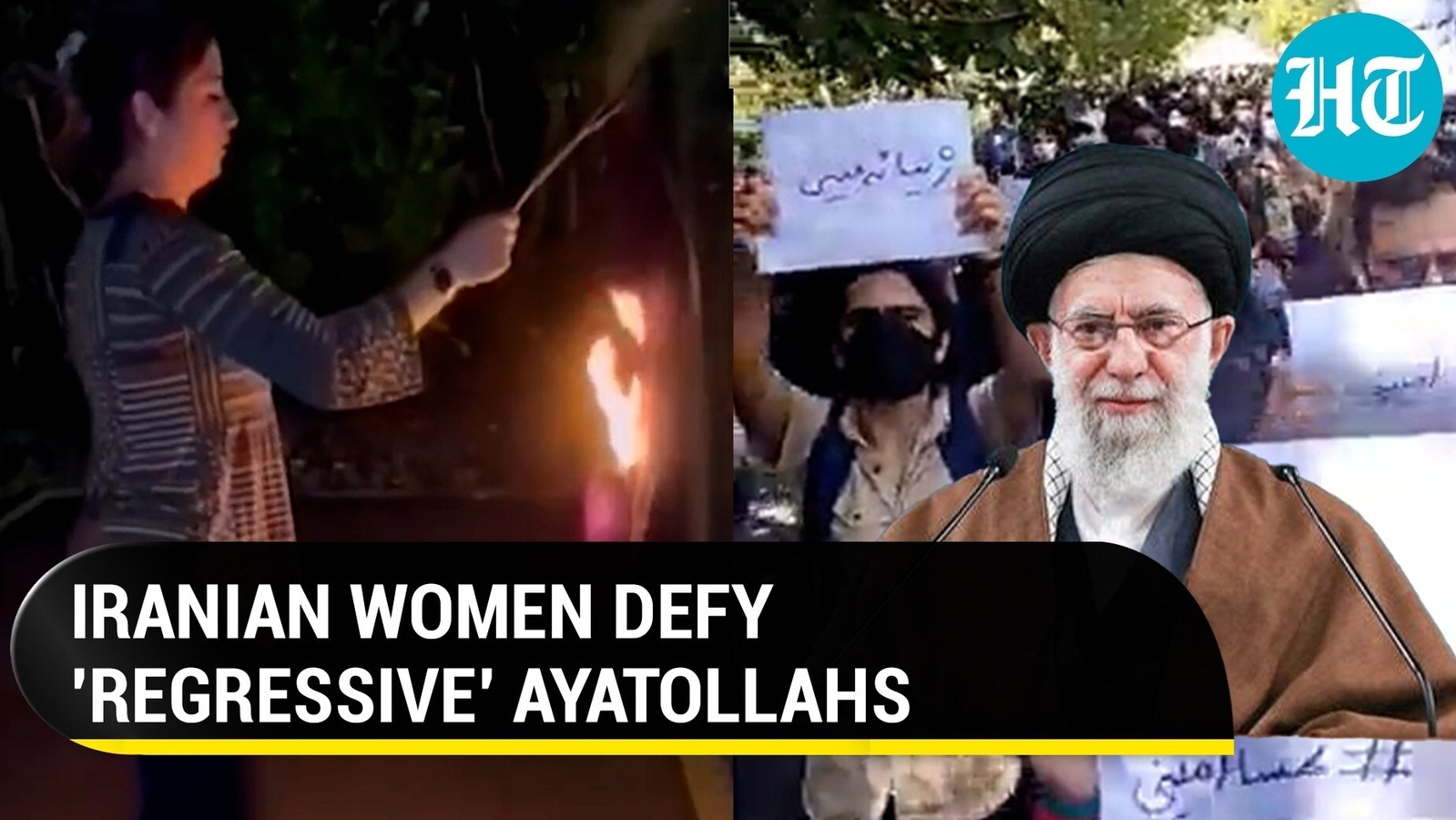Iran's Morality Police: Unpacking A Nation's Struggle For Freedom
Table of Contents
- The Genesis of Moral Policing in Iran: A Historical Perspective
- The Modus Operandi of the Guidance Patrol
- The Profound Impact on Iranian Women's Lives
- Mahsa Amini's Death: A Catalyst for Unprecedented Protests
- Decoding "Moral": Principles, Practices, and Perceptions
- The Disbandment Debate: What Does it Truly Mean?
- The Future of Freedom and Governance in Iran
- Conclusion
The Genesis of Moral Policing in Iran: A Historical Perspective
To understand the current landscape of moral policing in Iran, it is crucial to trace its origins and evolution. While the term "morality police" might seem like a modern construct, forces with similar objectives have existed in various forms across the Middle East for centuries, often tied to religious interpretations of public conduct.Roots Before the Revolution
Even prior to the Islamic Revolution of 1979, elements of societal control based on religious or traditional norms were present in parts of the Middle East. These were often informal community pressures or localized religious committees rather than a centralized state apparatus. However, the concept of enforcing a specific moral code in public spaces was not entirely alien to the region. This historical context is vital because it demonstrates that while the *Gasht-e Ershad* is a post-revolutionary phenomenon, the idea of moral oversight has deeper roots.Post-Revolutionary Enforcement
The formal establishment of the morality police in Iran occurred soon after the Islamic Revolution of 1979. Following the overthrow of the Shah, the new Islamic Republic sought to transform Iranian society in line with its interpretation of Islamic principles. This transformation included the enforcement of a strict Islamic dress code for women and a broader set of rules governing "moral behavior" in public. The unit responsible for this enforcement, the Guidance Patrol, became a visible symbol of the state's determination to regulate personal conduct. Their mandate was clear: ensure adherence to Islamic codes, particularly the mandatory hijab for women, and maintain public "morality" as defined by the state. This marked a significant shift, embedding religious enforcement directly into the state's security apparatus, making moral policing a pervasive and inescapable aspect of daily life for Iranians.The Modus Operandi of the Guidance Patrol
The operational methods of the Guidance Patrol are a key reason why Iran's morality police has earned its infamous reputation. Their activities extend far beyond merely issuing warnings, often involving direct confrontation, detention, and what critics describe as arbitrary enforcement. The *Gasht-e Ershad* operates through patrols, typically comprising male and female officers, who monitor public spaces – streets, parks, shopping centers – for perceived violations of the Islamic dress code and other moral norms. For women, the primary focus is the mandatory hijab, which requires covering the head and neck, but also extends to ensuring "modest" attire, meaning loose-fitting clothing that obscures the body's contours. The interpretation of what constitutes "modest" is often subjective and can vary from officer to officer, leading to inconsistent and unpredictable enforcement. Beyond the dress code, the morality police also enforce broader aspects of "moral behavior." This can include preventing public displays of affection between unmarried couples, cracking down on mixed-gender gatherings, monitoring music played in cars, and even scrutinizing hairstyles or makeup deemed "un-Islamic." When a violation is observed, officers may issue a verbal warning, or in more severe cases, detain individuals. Those detained are often taken to "re-education" centers, where they are lectured on Islamic values and required to sign pledges promising future compliance. In many instances, this process can involve lengthy detentions, fines, or even physical altercations, as tragically exemplified by the case of Mahsa Amini. The arbitrary nature of these encounters and the lack of clear, consistent guidelines for enforcement contribute significantly to the public's fear and resentment towards this arm of the state.The Profound Impact on Iranian Women's Lives
The presence and actions of moral policing in Iran have had a deeply pervasive and often debilitating impact on the lives of Iranian women. For decades, they have been at the forefront of facing "the wrath of the Islamic Republic’s morality enforcers firsthand," making their daily existence a constant negotiation with state-imposed regulations. One of the most immediate effects is the pervasive sense of fear and anxiety. Every public outing becomes a potential encounter with the Guidance Patrol, where even a slightly loosened headscarf or a brightly colored coat can lead to interrogation, detention, or worse. This constant threat restricts personal freedom and expression, forcing women to conform to a state-sanctioned appearance that often clashes with their individual identities and preferences. The choice of clothing, a fundamental aspect of personal autonomy in many societies, becomes a political statement and a source of vulnerability. Beyond physical appearance, the moral police's mandate to enforce "moral behavior" curtails women's social interactions and public presence. Mixed-gender social gatherings, dancing, or even walking with a male friend who is not a close relative can invite scrutiny. This limits opportunities for social engagement, professional networking, and simply enjoying public spaces without apprehension. The psychological toll of living under such constant surveillance is immense, leading to stress, self-censorship, and a diminished sense of agency. The profound impact is also evident in the growing number of forced veiling dissidents. Many women, particularly younger generations, are increasingly pushing back against these restrictions, viewing them as an infringement on their basic human rights. This defiance, often expressed through subtle acts of non-compliance or overt protests, highlights the deep chasm between the state's vision of women's roles and the aspirations of a significant portion of the female population. The moral policing apparatus, therefore, does not merely enforce rules; it shapes the very fabric of women's lives, dictating their public identity, limiting their social spheres, and contributing to a pervasive sense of oppression.Mahsa Amini's Death: A Catalyst for Unprecedented Protests
While resistance to the morality police has simmered for years, the tragic death of Jina Mahsa Amini in September 2022 ignited a nationwide inferno of protests, unlike anything Iran had witnessed in decades. Her death became a potent symbol of the systemic oppression and brutality inherent in the system of moral policing in Iran. Mahsa Amini, a 22-year-old Kurdish woman, was arrested by the Guidance Patrol in Tehran for allegedly violating the country's strict dress code. Within days, she died in police custody under suspicious circumstances, with authorities claiming she suffered a heart attack, a claim widely disputed by her family and protesters who believe she was beaten. Her death immediately "galvanized thousands of Iranian women" and men across the country, transforming long-held grievances into a unified cry for change. The protests, initially sparked by Amini's death, quickly broadened to encompass wider demands for personal freedom, human rights, and an end to the Islamic Republic's authoritarian rule. The phrase "Woman, Life, Freedom" became the rallying cry, echoing through streets, universities, and homes. "Iran's Guidance Patrol is under fire after protests across the country," with demonstrations erupting in virtually every province. These protests were particularly notable for the prominent role of women, many defiantly removing or burning their headscarves in public, and the significant participation of younger generations. The youth crisis, marked by high unemployment, limited social freedoms, and a disconnect from the ruling establishment's values, contributed significantly to the protests' intensity and breadth. These younger generations, aspiring to greater personal freedom and modern values, found in Mahsa Amini's death a potent symbol of the injustices they had long endured. The protests showcased a confluence of factors – state violence, growing numbers of forced veiling dissidents, and deep-seated youth disillusionment – all converging to challenge the very foundations of moral policing and, by extension, the regime itself. The events following Amini's death underscored the profound public anger and the urgent need for fundamental reforms regarding personal liberties in Iran.Decoding "Moral": Principles, Practices, and Perceptions
The concept of "moral" itself is central to understanding moral policing in Iran, yet its interpretation often becomes a point of contention between the state and its citizens. The meaning of "moral" is fundamentally "of or relating to principles of right and wrong in behavior," concerning "the standards of good or bad behavior, fairness, honesty, etc." A "moral person behaves in a way that is believed by most people to be good and right." However, what constitutes "good" or "right" is deeply shaped by cultural, religious, and societal norms, leading to significant divergences in Iran.Defining Morality in a Societal Context
Morality, derived from the Latin word *mores* (for habits), broadly refers to "the set of standards that enable people to live cooperatively in groups." It’s "what societies determine to be 'right' and 'acceptable.'" These standards form a code or system of moral rules, principles, or values that guide human behavior. The "moral of a story is supposed to teach you how to be a better person," implying a societal consensus on desirable conduct. When used as an adjective, "moral" means good or ethical, reflecting a generally accepted standard of upright behavior. In essence, morality is the collective conscience of a community, dictating what is permissible and what is not for the common good.The State's Interpretation vs. Public Understanding
In Iran, the clash arises because the state's interpretation of morality is rigidly rooted in a specific, conservative reading of Islamic law, often referred to as Sharia. This interpretation dictates not only broad ethical principles but also minute details of personal conduct, particularly concerning women's dress and public interactions. The Guidance Patrol operates based on this state-sanctioned moral code, enforcing it through coercive means. However, a significant portion of the Iranian population, especially younger generations and urban dwellers, holds a different understanding of morality. While many are religious, their interpretation of Islamic principles often emphasizes personal piety and individual choice over strict state enforcement of dress codes. They aspire to greater personal freedom and modern values, where morality is seen as an internal compass rather than an external imposition. This divergence creates a profound tension: the state views its actions as upholding divine law and societal order, while many citizens perceive them as an infringement on their fundamental rights and an outdated imposition. This radicalization of politics in Iran, fueled by rising state violence over the past decade, highlights the growing chasm between the rulers' rigid moral framework and the evolving moral landscape desired by a dynamic and increasingly defiant populace. The concept of moral policing in Iran thus becomes a battleground for competing visions of society itself.The Disbandment Debate: What Does it Truly Mean?
Following the intense and widespread protests sparked by Mahsa Amini's death, reports emerged in late 2022 suggesting that Iran's morality police might be disbanded. This news, though met with cautious optimism, immediately raised a critical question: "What does disbanding the morality police mean for Iran?" For many, it seemed like a significant concession to protesters, as "the unit responsible for enforcing the country’s strict Islamic dress code for women has been shut down." However, the reality of this "disbandment" is far more complex and has been met with considerable skepticism. Initially, reports from the public prosecutor suggested the *Gasht-e Ershad* had been dissolved. Yet, no official confirmation from the Interior Ministry or other high-ranking authorities followed. Instead, subsequent statements from officials indicated that while the *Gasht-e Ershad* might cease to exist in its current form, the state's commitment to enforcing the hijab and other moral codes remains unwavering. This has led many to believe that the "disbandment" might be a strategic rebranding or a temporary measure to quell unrest, rather than a fundamental shift in policy. Historically, similar forces were present in parts of the Middle East even prior to the Islamic Revolution, and Iran itself has seen various iterations of morality enforcement bodies since 1979. The regime has a history of adapting its methods of control rather than abandoning them entirely. Critics argue that even if the *Gasht-e Ershad* is formally dissolved, other entities, such as plainclothes officers or local Basij militia, could take over its functions, or new, less visible forms of moral policing could emerge. The core issue, for many, is not merely the existence of a specific unit but the principle of mandatory hijab and the state's right to dictate personal behavior. Until these fundamental policies are addressed, any "disbandment" of the morality police is likely to be seen as a superficial concession rather than a genuine move towards greater freedom. The question remains whether this is a true turning point or simply a tactical retreat in the face of overwhelming public dissent.The Future of Freedom and Governance in Iran
The recent protests and the ongoing debate surrounding moral policing in Iran have brought to the forefront critical questions about the nation's future, particularly concerning personal freedoms and the nature of governance. The confluence of factors – the radicalization of politics in Iran due to rising state violence over the past decade, the growing number of forced veiling dissidents, and the significant contribution of the youth crisis to the protests – paints a picture of a society at a crossroads. The widespread demand for greater personal freedom and modern values, especially among younger generations, is undeniable. They seek a society where individual choices, particularly regarding dress and social interactions, are respected, and where the state does not intrude upon private lives. This aspiration directly challenges the foundational tenets of the Islamic Republic's governance, which views the enforcement of Islamic codes as a non-negotiable duty. The resilience and courage demonstrated by Iranian women, who have been at the forefront of these protests, removing their headscarves and risking severe repercussions, highlight the depth of their resolve. Their actions are not merely about a piece of cloth but symbolize a broader fight for dignity, equality, and the right to self-determination. The future trajectory of Iran will largely depend on how the regime responds to these escalating demands. A genuine move towards reform would involve not just the potential disbandment of the morality police but a re-evaluation of mandatory hijab laws and a broader liberalization of social policies. However, the regime's history suggests a preference for maintaining control, often through repression and tactical concessions rather than fundamental change. The international community continues to observe these developments closely, with scholars like Roxane Farmanfarmaian providing insights into the historical context and ongoing dynamics, as noted by NPR's Juana Summers. The struggle for freedom in Iran is an evolving narrative, marked by periods of intense defiance and state crackdown, yet the unwavering spirit of those yearning for a more open and just society persists. The path ahead remains uncertain, but the recent events have irrevocably altered the discourse around moral policing and the future of human rights in Iran.Conclusion
The saga of moral policing in Iran, from its post-revolutionary inception to the current wave of protests ignited by Mahsa Amini's tragic death, represents a profound and ongoing struggle for fundamental freedoms. For decades, the *Gasht-e Ershad*, the embodiment of moral policing in Iran, has been a symbol of state control over personal lives, particularly for women, earning its reputation as the "most hated organ of the Ayatollah regime." The enforcement of strict Islamic dress codes and "moral behavior" has deeply impacted the daily existence of millions, fostering a pervasive atmosphere of fear and anxiety. Mahsa Amini's death served as a powerful catalyst, galvanizing thousands of Iranian women and men to demand an end to this oppressive system. These unprecedented protests, fueled by a confluence of factors including state violence and the aspirations of a disillusioned youth, have brought the issue of moral policing to the global stage. While discussions around the disbandment of the morality police have emerged as a potential concession, skepticism remains high regarding the true extent of such a change, with many fearing it may only be a rebranding rather than a fundamental shift in policy. The core of the conflict lies in the divergent interpretations of "moral" – the state's rigid, conservative view versus the public's desire for greater personal autonomy and modern values. The fight against moral policing in Iran is therefore not just about a dress code; it is a battle for human dignity, individual choice, and the very future of governance in the nation. The resilience of Iranian women, who continue to defy and demand change, underscores the enduring human spirit in the face of adversity. As this critical moment unfolds, it is imperative for us to remain informed and engaged with the unfolding events in Iran. Share this article to spread awareness, and consider exploring other related content to deepen your understanding of this vital struggle for freedom and justice.
Revision: Moral Policing - PWOnlyIAS

Moral Policing & It's India Context : In-depth Analysis

Iran women burn Hijabs, cut hair to protest moral policing, enforced